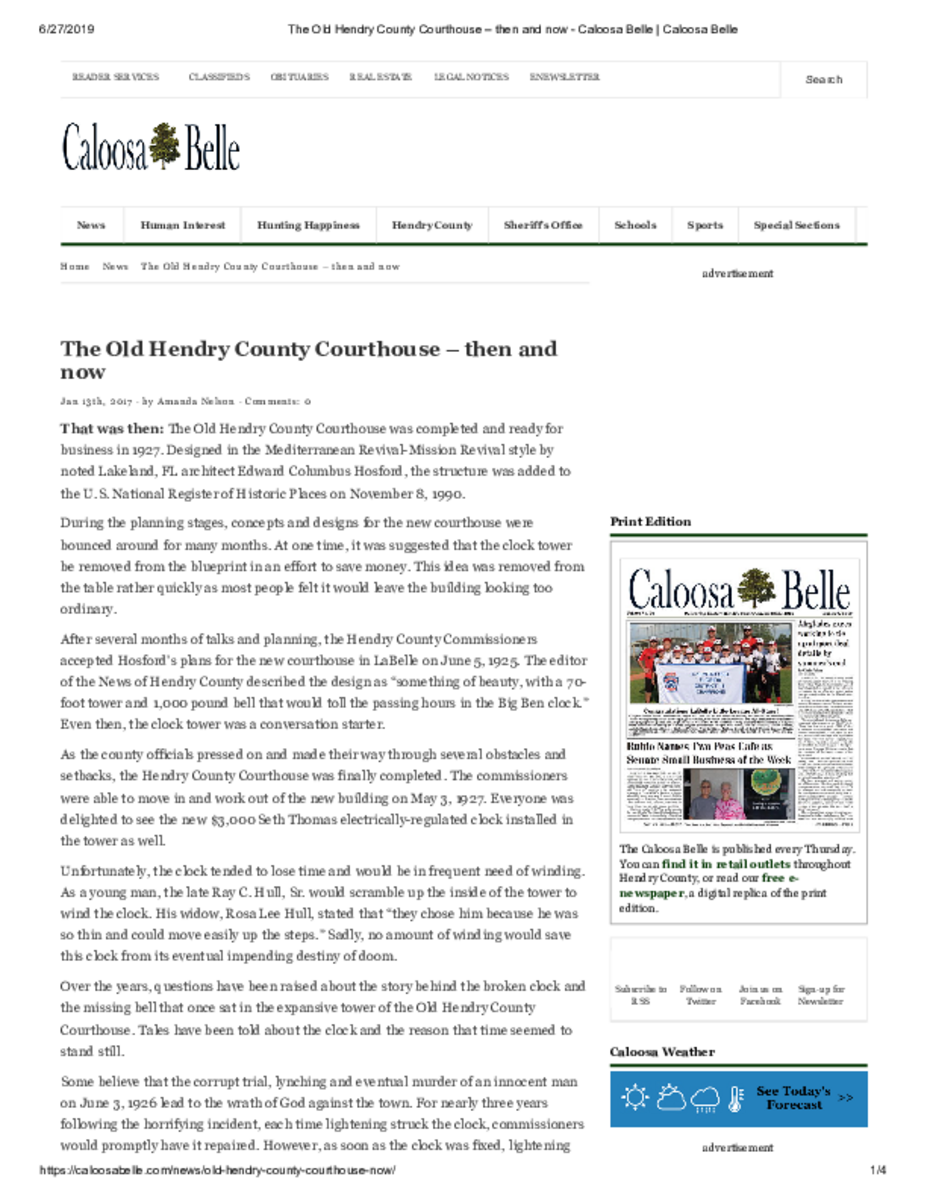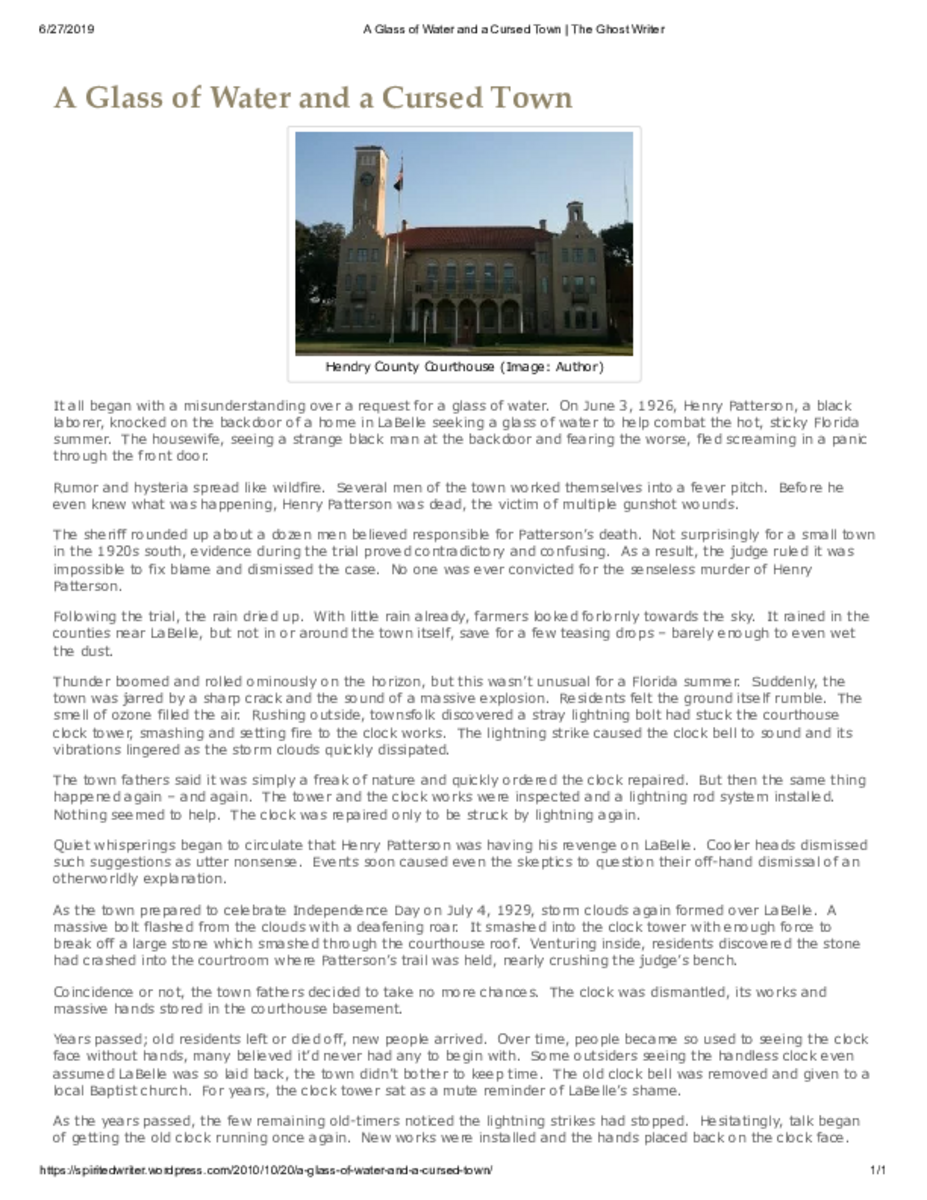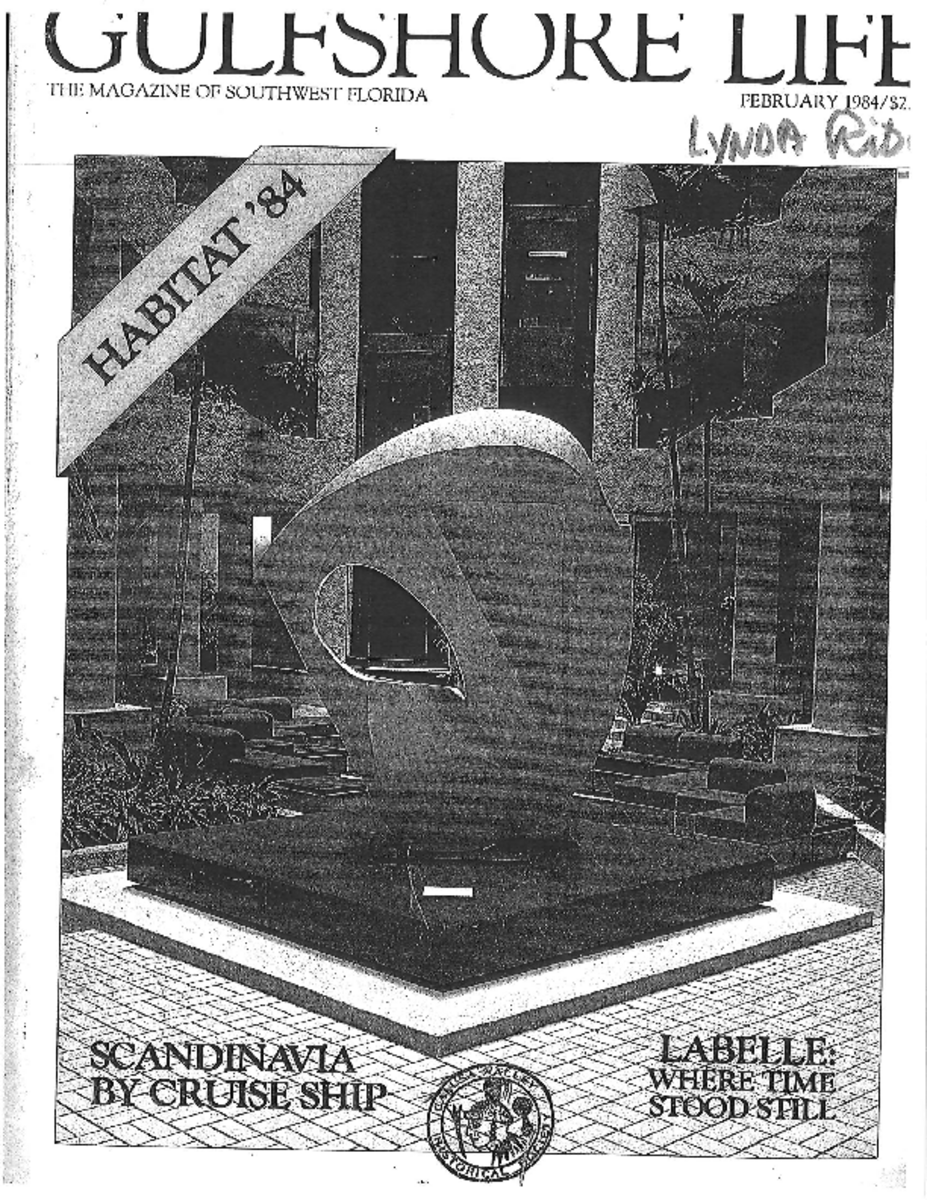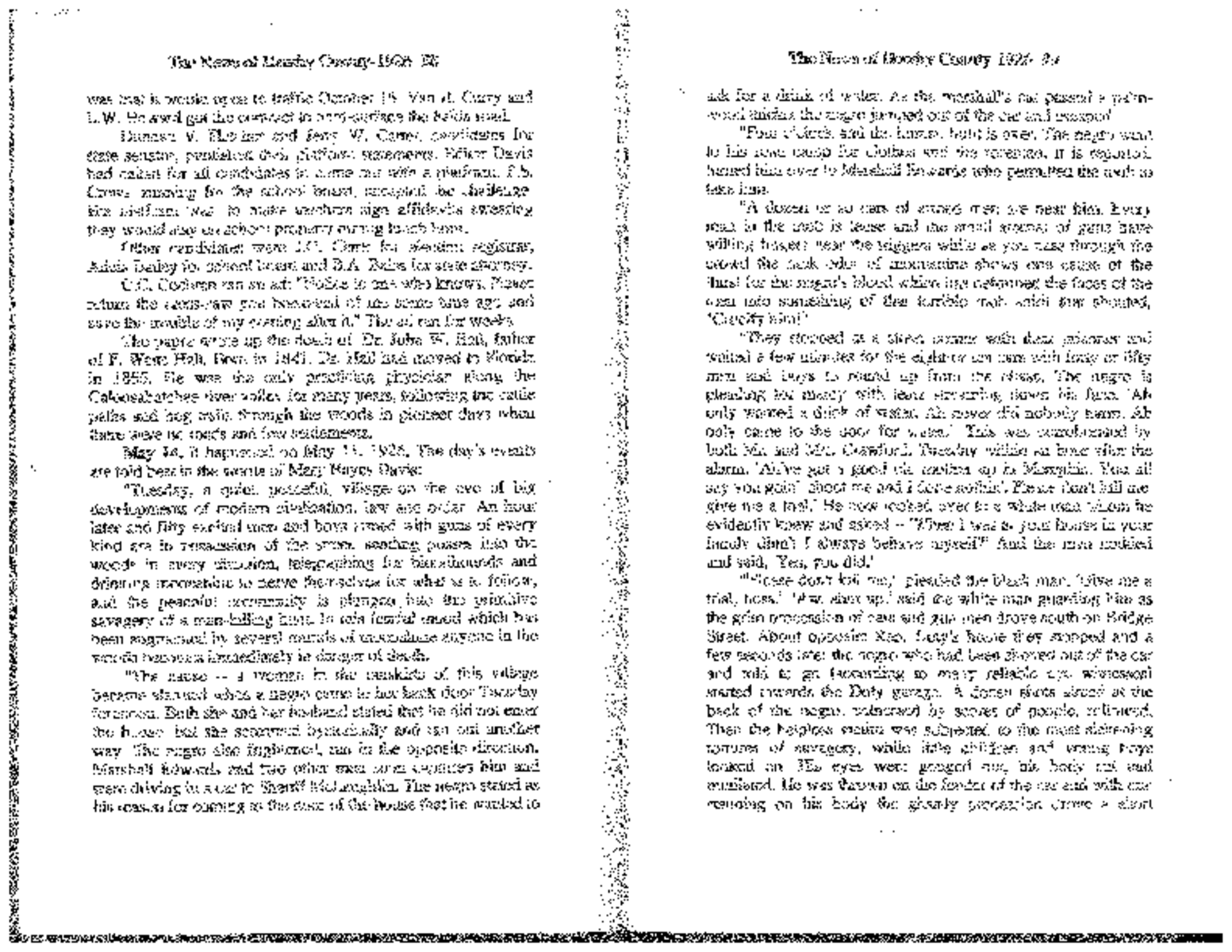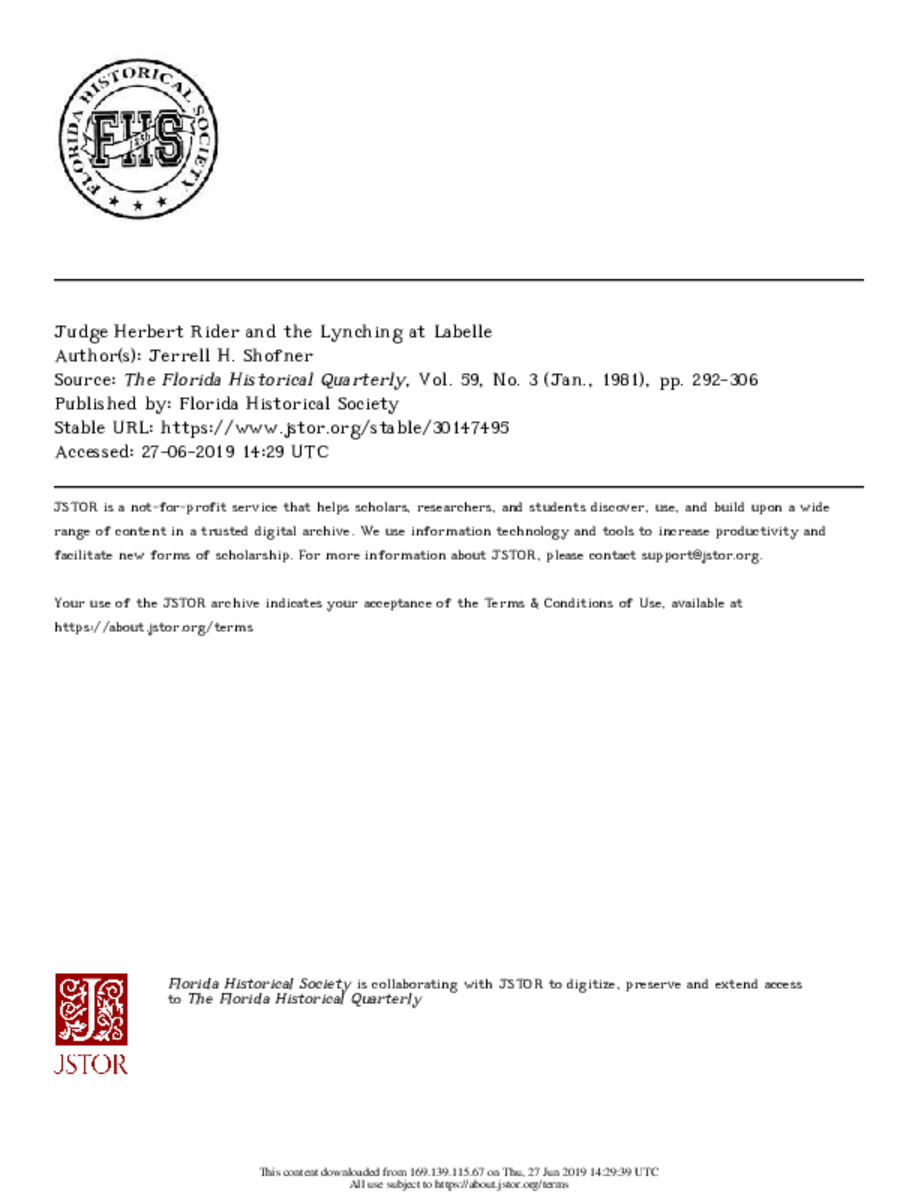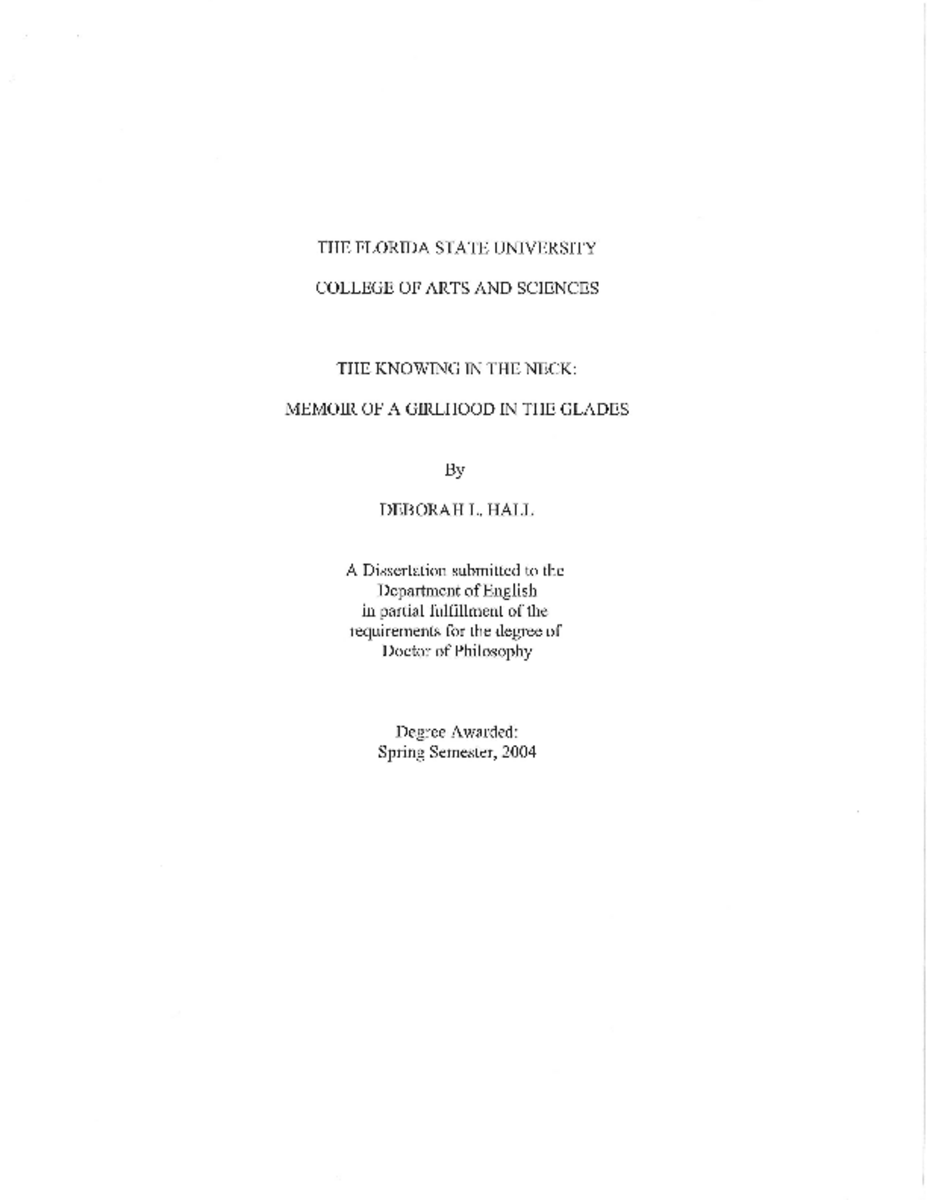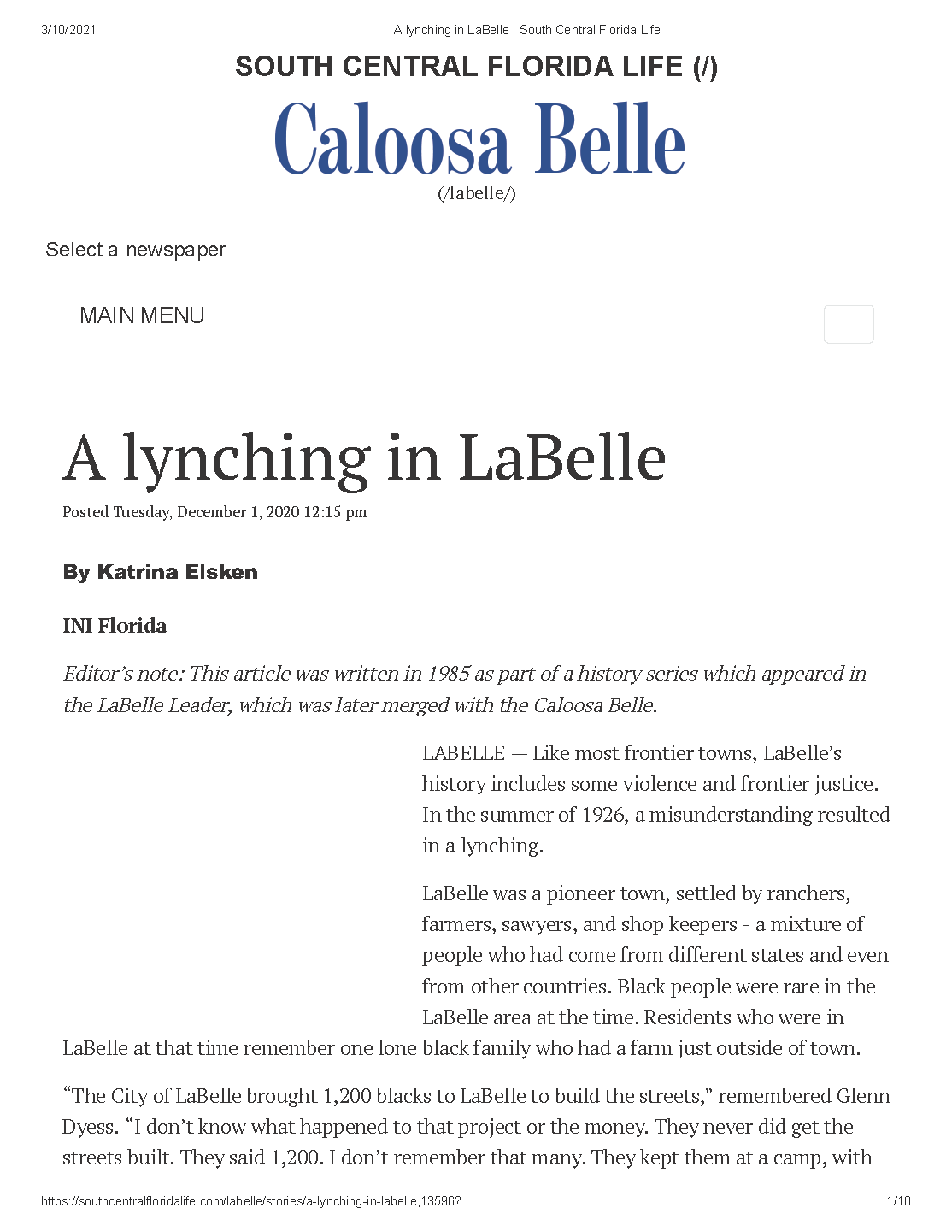“The Old Hendry County Courthouse – then and now”
Written in 2017, this article from a local LaBelle newspaper, Caloosa Belle, primarily explores the history of the Hendry County Courthouse, with a brief reference to the lynching. In the one-sentence reference of the lynching, the article claims the lynching invited “divine retribution” upon the courthouse in the form of lightning storms (a very common event in south Florida) and notably makes no mention of the racial motivation of the lynching or Henry Patterson (the victim). The article also mistakenly claims the lynching took place on June 3, 1926. Although brief, this article can be useful to researchers as it demonstrates how the lynching is understood contemporarily and how the lynching of Henry Patterson continues to exist in the narratives about LaBelle’s history. It also illustrates how these narratives can become confused and riddled with inaccuracies when only preserved in oral histories. Yet, without an understanding of the larger nuance, the article fails to properly convey the gravity of this lynching and its implications, it instead treats it more like an urban legend.
A Glass of Water and a Cursed Town, 2010
“A Glass of Water and a Cursed Town” is an article written by a blogger named “The Spirited Writer” for the website, The Ghost Writer. It describes how a request for a glass of water made by an African American laborer, Henry Patterson, resulted in his lynching. However, the story does not remain in the narrative or explore the underlying causes; it delves into the effects of Henry Patterson’s lynching on the town of Labelle. According to the author, following Patterson’s lynching, the rain dried up and stray lightning bolts struck the county courthouse clock tower. Superstitious persons and skeptics alike started questioning whether the calamities were punishment for the lynching of Henry Patterson. The author speculates into the supernatural in a way that is not verifiable as he investigates the possibility of Patterson’s spirit taking revenge on Labelle. While much of the instances presented in this article delves into the supernatural and cannot be verified, this demonstrates how the lynching of Henry Patterson continues to resonate into the present day for locals and non-residents, alike.
Gulf Shore Life Article
This issue of The Gulf Shore Life magazine was published in February of 1984. The article is a historical narrative on the lynching of Henry Patterson and the presumably "supernatural" events that occurred after. Titled “LaBelle: The Town Where Time Stood Still,” the source vividly describes the events that let up to Patterson's lynching, including his encounter with Bennett Crawford and the crowd responsible for his execution. The narrative also discusses the unusual lightning strikes and paranormal activity surrounding the LaBelle courthouse clock tower afterward that was said to be a sign of "divine retribution" for the lynching. The article provides researchers with a look into the superstitions and perceptions of the lynching during the 1980s and how it was presented in regional media. Although an insightful anecdote that provides a look into the legacy of the lynching and LaBelle's history, the article does seem to be slightly embellished for the sake of storytelling.
In the Shadow of the Tree of Strange Fruit
In the Shadow of the Tree of Strange Fruit by Theresa Hamilton is a concise documentation of the causes of the lynching of Henry Patterson and its gradual loss from local history. Hamilton provides a chronological narrative accompanied by images that give background context to the lynching and its eventual fade from LaBelle's history. The author explains how frustration among whites in LaBelle over the loss of potential jobs to African Americans contributed to the incident. Hamilton also discusses the progressive loss of legal and social interest in the incident due to the subsequent depression and natural disasters of the 1920s, which contributed to its loss in LaBelle's history. Although the article does not go into full detail of Patterson's lynching and the legal battle that followed, it can provide researchers with context that helps identify factors that contributed to the incident and gives insight into the current quandary over the inclusion of the event in LaBelle's institutional and collective memory.
News of Hendry County, 1922-1931, compiled by Ailsa B. Dewing
This secondary source is the best source for understanding local reactions, interpretations, and reporting of the lynching, investigations, and trials. The author summarized all available issues of the News of Hendry County from 1920 to 1932. There are extensive summaries from May through December 1926 that spotlight the lynching and trials. The news article provides an incredibly detailed summary on the events that unfolded with Henry Patterson. The main issue with this source is that there are only summaries, not actual copies of the newspaper articles. However, the local coverage is an essential starting point for any researching looking into the case.
The last slide is of the title page of this book. You will notice that the book is dedicated, in part, to Henry Patterson. This type of recognition of the lynching is typical for LaBelle. Around the town, there are small references to the lynching, including this dedication, a memorial bench in Barron Park dedicated to Henry Patterson, and a memorial brick outside of the LaBelle Heritage Museum.
“Judge Herbert Rider and the Lynching at LaBelle” by Jerrell H. Shofner
This is perhaps the best scholarly treatment of the lynching of Hendry Patterson and failed prosecution. The article explores the events surrounding the lynching for Henry Patterson through the eyes of Judge Herbert Rider. The overall coverage is good and provides an excellent summary of all the important events. While there is perhaps too much reliance on Herbert Rider’s recollections on his actions during and after the trial, this source is essential to understand the general events, but also the scholarly treatment of lynchings and investigations more broadly in the 1980s.
The Knowing in the Neck: Memoir of a Girlhood in the Glades
Published in 2003, this memoir of a woman raised in South Florida demonstrates how many South Floridians learned about the lynching: through scattered mention from old relatives and readings in libraries. Deborah L. Hall, the author of the memoir, did not know any of the details of this lynching other than its mere existence until she did her own research, despite that her family had been established in Labelle and South Florida for generations. Her own grandfather was a direct eyewitness to the lynching, but he only mentioned it to her twice, and with no details at that. It is a sad truth that this lynching, for as brutal and horrifying as it was, has simply avoided being widely known today, even among South Floridians who had family who were directly involved.
“A Lynching in LaBelle,” by Katrina Elsken
This newspaper article was originally published in 1985 as part of a history series which appeared in the LaBelle Leader, which was later merged with the Caloosa Belle. It was reprinted alongside an article about a memorial bench that commemorated the lynching on Henry Patterson in 2020. While much of the article summarizes what happened in the lynching and echoes some of the other sources on this site, of particular interest are the interviews conducted with locals. Several locals recalled what they remembered about the lynching from nearly 60 years prior. While the quotations are not extensive, it does provide some insight into what people remembered happening in 1926. The drawbacks of this source are that it is not very extensive. It is also important to keep in mind that this article is more of an indication of what people thought about this case in the 1980s. Researches can compare this summary of events with the newspaper coverage from the time to get an idea of how this lynching was remembered locally and where there are discrepancies in the storytelling.
